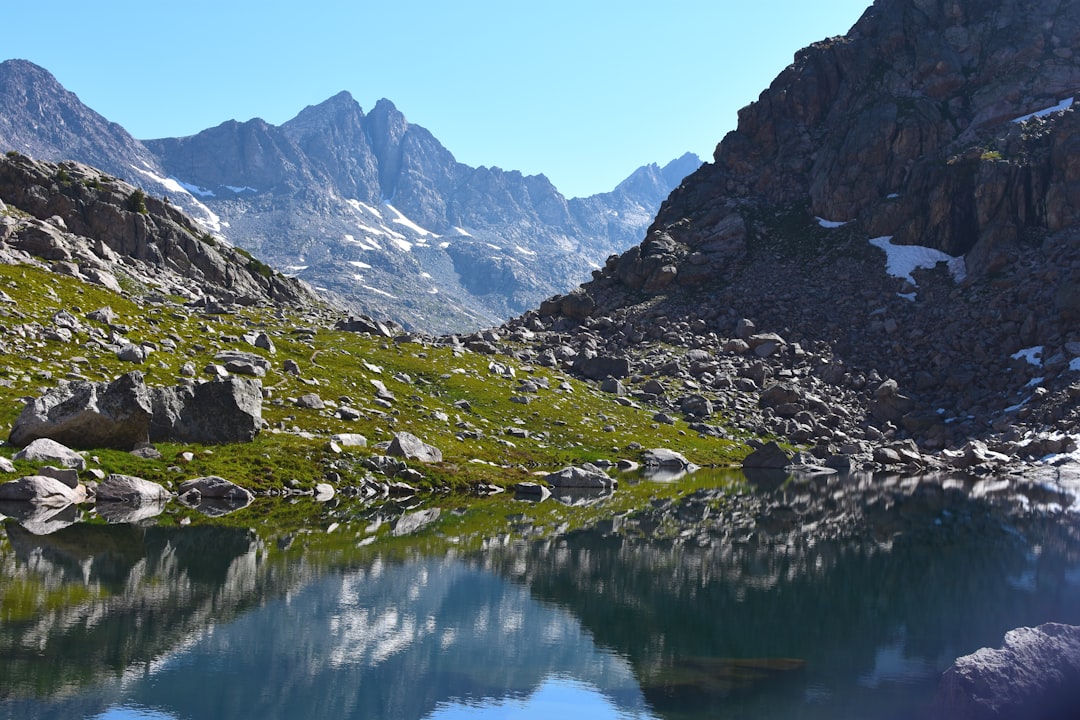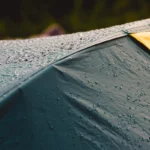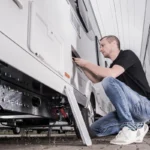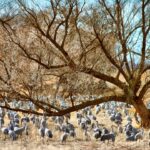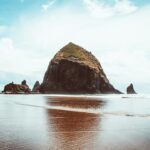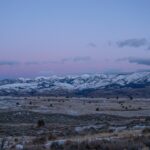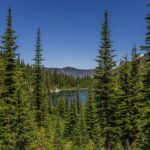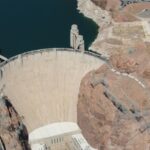Overlanding is a form of travel that combines off-roading and camping, allowing adventurers to explore remote and rugged areas that are inaccessible by traditional vehicles. Wyoming’s Wild West is the perfect destination for overlanding, with its vast landscapes, diverse wildlife, and rich history. Overlanding in Wyoming offers the opportunity to experience the true essence of the American West, with its wide-open spaces, towering mountains, and pristine wilderness.
Wyoming has a long history of overlanding, dating back to the days of the pioneers and fur trappers who traversed the rugged terrain in search of new opportunities. These early explorers relied on their wits and survival skills to navigate the untamed wilderness, and their spirit of adventure lives on in the modern-day overlanders who venture into Wyoming’s backcountry.
The Best Routes for Overlanding in Wyoming’s Backcountry
Wyoming offers a variety of routes for overlanders to explore, each with its own unique challenges and rewards. One popular route is the Medicine Bow National Forest, which offers stunning views of the Snowy Range Mountains and opportunities for hiking, fishing, and wildlife viewing. Another popular route is the Wind River Range, known for its rugged beauty and world-class fishing.
For those seeking a more challenging adventure, the Bighorn Mountains offer steep climbs and breathtaking vistas. The Red Desert is another popular destination for overlanders, with its vast expanses of sagebrush and unique geological formations.
Gear Essentials for Overlanding in the Wild West
When embarking on an overlanding adventure in Wyoming’s Wild West, it is important to have the right gear to ensure a safe and enjoyable trip. Some essential gear includes a reliable off-road vehicle with good ground clearance, recovery equipment such as a winch and tow straps, camping gear including a tent, sleeping bag, and cooking equipment, navigation tools such as a GPS and maps, and emergency supplies including a first aid kit and extra food and water.
Packing efficiently is key when overlanding, as space is often limited. It is important to prioritize the essentials and pack items that have multiple uses. Investing in high-quality gear from reputable brands is also recommended, as it will be more durable and reliable in the rugged conditions of Wyoming’s backcountry.
The Best Places to Camp in Wyoming’s Backcountry
| Campsite Name | Location | Distance from Trailhead (miles) | Elevation (feet) | Availability |
|---|---|---|---|---|
| Titcomb Basin | Wind River Range | 20 | 10,500 | First-come, first-served |
| Paintrock Lakes | Bighorn Mountains | 8 | 9,500 | Reservation required |
| Leigh Lake | Grand Teton National Park | 2 | 6,800 | Reservation required |
| Green River Lakes | Wind River Range | 7 | 8,000 | First-come, first-served |
| Upper Slate Lake | Snowy Range | 5 | 10,000 | First-come, first-served |
Wyoming offers a wide range of camping options for overlanders, from established campgrounds with amenities to remote backcountry sites. Some popular campsites include the Vedauwoo Campground in Medicine Bow National Forest, which offers stunning rock formations and easy access to hiking trails, and the Green River Lakes Campground in the Wind River Range, which offers breathtaking views of the mountains and opportunities for fishing and boating.
For those seeking a more remote camping experience, dispersed camping is allowed in many areas of Wyoming’s backcountry. This allows overlanders to find their own secluded spot and enjoy the solitude of the wilderness. However, it is important to practice Leave No Trace principles and follow any regulations or restrictions in place.
Wildlife Encounters on Overlanding Adventures in Wyoming
Wyoming is home to a diverse array of wildlife, including elk, moose, bison, wolves, and bears. While encountering wildlife can be an exciting part of an overlanding adventure, it is important to do so safely and responsibly. Some tips for safely encountering wildlife include keeping a safe distance, never approaching or feeding wild animals, and storing food and trash securely to avoid attracting wildlife.
For those interested in wildlife photography, it is important to respect the animals’ space and observe from a distance. Using a telephoto lens can help capture close-up shots without disturbing the animals. It is also important to be patient and wait for the right moment to capture that perfect shot.
The History of Wyoming’s Wild West and its Impact on Overlanding
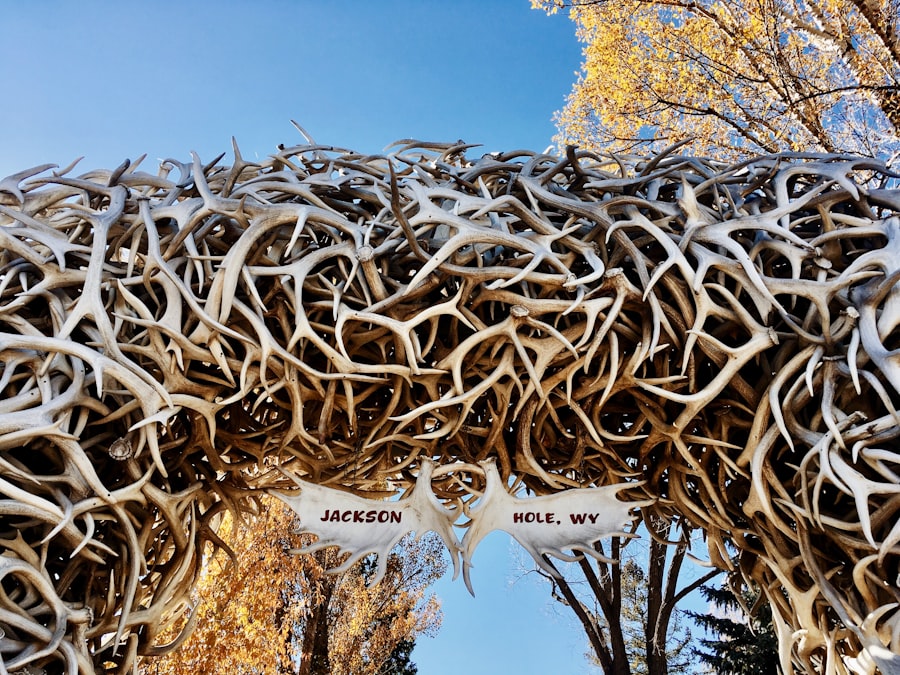
Wyoming’s Wild West has a rich history that dates back to the days of the pioneers and fur trappers. The state was a key part of the western expansion of the United States, with the Oregon Trail and other historic routes passing through its rugged landscapes. The history of Wyoming is deeply intertwined with the spirit of adventure and exploration, making it the perfect destination for overlanding.
Today, overlanders can visit historical landmarks and sites that tell the story of Wyoming’s Wild West. Some notable sites include Fort Laramie National Historic Site, which was a key trading post and military outpost during the 19th century, and Independence Rock, which served as a landmark for pioneers traveling along the Oregon Trail.
Overlanding Safety Tips for Wyoming’s Backcountry
While overlanding in Wyoming’s backcountry can be an exhilarating adventure, it is important to prioritize safety. Some safety precautions to take while overlanding include always wearing a seatbelt, driving at a safe speed, and staying on designated roads and trails. It is also important to be prepared for emergencies by carrying a first aid kit, extra food and water, and a means of communication such as a satellite phone or radio.
Navigating difficult terrain can be challenging, so it is important to have the necessary skills and equipment. This includes knowing how to use recovery equipment such as a winch or tow straps, understanding how to read maps and use a GPS, and having a basic understanding of off-road driving techniques.
Exploring Wyoming’s Wild West on Foot: Hiking Trails and Routes
In addition to overlanding, Wyoming offers a wealth of hiking trails and routes for those who prefer to explore on foot. Some popular hiking trails include the Teton Crest Trail in Grand Teton National Park, which offers stunning views of the Teton Range, and the Wind River High Route, which traverses the rugged Wind River Range.
When planning a hiking trip in Wyoming, it is important to consider the difficulty level and duration of each trail. Some trails may require advanced hiking skills and equipment, while others may be suitable for beginners. It is also important to be prepared for changing weather conditions and to carry the necessary gear and supplies.
The Best Time of Year for Overlanding in Wyoming’s Backcountry
The best time of year for overlanding in Wyoming’s backcountry depends on personal preferences and the specific routes and areas being explored. Spring and fall offer mild temperatures and fewer crowds, making them popular times for overlanding. Summer can be hot, especially in lower elevations, but offers longer days and opportunities for fishing and boating.
Winter can be a challenging time for overlanding in Wyoming, as the weather can be harsh and many roads and trails may be closed or impassable. However, for those who are prepared and experienced in winter travel, it can offer a unique and rewarding adventure.
Capturing the Beauty of Wyoming’s Wild West: Photography Tips for Overlanders
Wyoming’s Wild West offers endless opportunities for stunning photography, from sweeping landscapes to close-up shots of wildlife. Some tips for capturing beautiful photos while overlanding in Wyoming include shooting during the golden hours of sunrise and sunset, using a tripod to ensure sharp images, and experimenting with different angles and perspectives.
It is also important to have the right camera gear and settings. A DSLR or mirrorless camera with a wide-angle lens is recommended for capturing landscapes, while a telephoto lens is ideal for wildlife photography. It is also important to shoot in RAW format to capture more detail and have more flexibility in post-processing.
Overlanding in Wyoming’s Wild West offers a unique and unforgettable adventure, allowing travelers to explore the rugged beauty of the American West. With its diverse landscapes, rich history, and abundant wildlife, Wyoming is the perfect destination for overlanding. By following the tips and recommendations outlined in this article, overlanders can have a safe and enjoyable trip while experiencing the true essence of the Wild West. So pack your gear, plan your route, and get ready for an adventure of a lifetime in Wyoming’s backcountry.
If you’re planning an overlanding adventure in Wyoming, you’ll want to check out this article on “Exploring America’s Least Visited National Parks.” It provides valuable insights and recommendations for off-the-beaten-path destinations in Wyoming that are perfect for overlanding enthusiasts. From the stunning landscapes of Grand Teton National Park to the rugged beauty of Bighorn Canyon National Recreation Area, this article will help you discover hidden gems and escape the crowds. So grab your gear and start planning your next overlanding trip in Wyoming! Read more
FAQs
What is overlanding?
Overlanding is a type of self-reliant travel where the journey is the primary goal, often involving off-road vehicles and camping equipment.
Why is Wyoming a good destination for overlanding?
Wyoming offers vast expanses of public land, including national forests and wilderness areas, as well as scenic drives and historic trails.
What are some popular overlanding routes in Wyoming?
Popular overlanding routes in Wyoming include the Medicine Bow National Forest, the Wind River Range, the Red Desert, and the Bighorn Mountains.
What types of vehicles are suitable for overlanding in Wyoming?
Four-wheel drive vehicles with high clearance are recommended for overlanding in Wyoming, as many roads and trails are unpaved and can be rough.
What permits or fees are required for overlanding in Wyoming?
Permits and fees may be required for camping or accessing certain areas, such as national parks or wildlife refuges. Check with the appropriate agency for specific requirements.
What are some safety considerations for overlanding in Wyoming?
Safety considerations for overlanding in Wyoming include carrying adequate supplies and equipment, being prepared for changing weather conditions, and respecting wildlife and other visitors.
